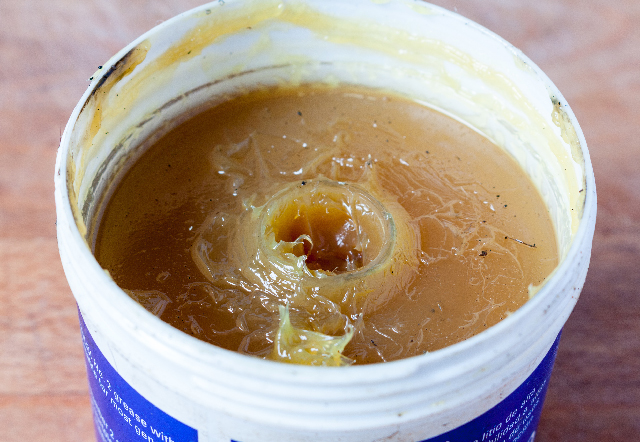The iron-rich rocks found on Mars may contain billions of kilograms of fatty acids
10/06/2018 / By Edsel Cook

British researchers have recommended that the newest wave of Mars rovers should target certain minerals that are rich in iron. An article in Space.com stated that these rocks might have trapped complex chains of carbon atoms that form fatty acids in the distant past.
Fatty acids are a common and important part of living organisms. Iron-rich rocks could offer the best chance to find these organic compounds on the Red Planet.
A stream in England mimics conditions on ancient Mars
The Imperial College London (ICL) research team made this recommendation while studying an acidic stream in Dorset, England. The stream is acidic because of the presence of an iron-sulfide mineral called pyrite, which is produced from charcoal deposits that were digested by bacteria during the time of the dinosaurs.
As time passed, the water in the stream oxidized the pyrite. In addition to creating the sulfuric acid that gives the water its current pH, the reaction also precipitated iron-sulfate minerals across the stream bed.
One of these minerals is jarosite, which is really good at capturing organic matter, such as fatty acids. Prolonged exposure to water turns jarosite into another iron-sulfate mineral, goethite.
Subjecting goethite to very dry conditions causes it to become a third iron-rich mineral: Hematite, the same mineral responsible for the rusty red color of Mars. Goethite, hematite, and jarosite are rather abundant on Mars.
The ICL researchers reported that the goethite in the acidic stream preserved a very large amount of fatty acids from long ago. The organic compounds were in very good condition.
If the microbial biomass of ancient Mars was similar to the one in the acidic stream, the researchers estimate that the iron-rich rocks of the Red Planet could hold at least 63 billion pounds (28.6 billion kilograms). (Related: New evidence helps astronomers determine when life could have existed on Mars.)
Curiosity rover has only two shots at finding fatty acids on Mars
ICL researcher Mark Sephton stressed that long-chain fatty acids are an explicit proof of organic life. Finding 18-atom-long fatty acids on Mars would definitely prove the existence of alien life on the planet.
Of course, finding those fatty acids is easier said than done. NASA’s Curiosity rover has spent years on Mars looking for signs of organic life. Its primary analyzer works by heating samples to evaporate organic molecules into a gaseous form that can be detected by its main sensor.
Curiosity also has a limited number of “wet chemistry” cups that can improve the detection of organic molecules. Only two of these cups contain chemicals that can work on fatty acids.
“We only get two attempts at the experiment,” explained NASA researcher Jennifer Eigenbrode, the leader of the team who recently found organic molecules on Mars. “The team is considering all options, including a clay-rich layer adjacent to Vera Rubin Ridge, which has been a key target for analysis since the start of the mission.”
Martian goethite materials might be preserving long-chain fatty acids
Sephton believed that goethite offered an alternative option to the clay-rich material. He noted that the Martian surface is covered in minerals that release oxygen when they are heated by, say, the landing rockets of NASA’s Phoenix lander from 2008.
The oxygen proceeds to combine with any organic compounds it comes across. The process destroys the latter.
Jarosite is one of those highly reactive minerals. However, goethite is much better at resisting heat. Since goethite is abundant and excels at preserving the organic materials it captured in its earlier jarosite form, it is one of the best bets at finding long-chain fatty acids on Mars.
For more articles about the possibility and evidence of life on Mars, check out Cosmic.news.
Sources include:
Tagged Under: ancient life, breakthrough, cosmic, Curiosity Rover, discoveries, fatty acids, Life on Mars, Long-chain fatty acids, Mars, NASA, organic life, planets, red planet, Space


















